Not far from San Jose, on the outskirts of the city of Heredia, is a beautiful, little-known botanical garden. El Arca Botanical Garden has several gardens with everything from medicinal and edible plants to ornamentals, flowers, and fruit trees. A highlight of visiting El Arca for us was enjoying the elaborate six-course farm-to-table meal. In this post, we’ll tell you more about touring El Arca Botanical Garden and the restaurant experience.
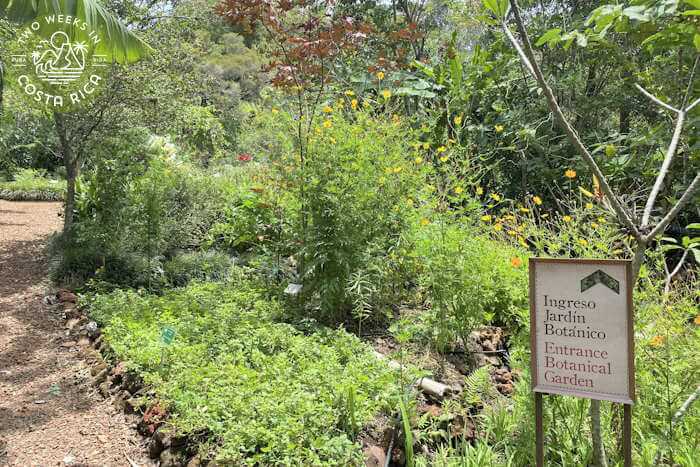
Location
El Arca Jardin Botanica (El Arca Botanical Garden) is located in the hills of Santa Barbara de Heredia. Although this area is quiet and peaceful, it’s only about 20 minutes from San Jose Airport and a half-hour from downtown San Jose.
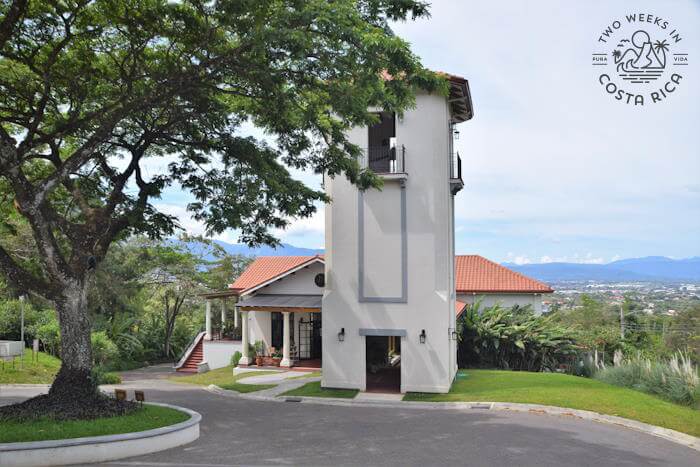
Background
The botanical garden sits on a large 20-acre (8-hectare) parcel. The history of El Arca is that about 45 years ago, the property was a coffee plantation. The owner began transitioning the land to grow herbs for export. Wanting to focus more on making a botanical garden, he later sold the herbs business and started collecting plants from all around the world.
Today, El Arca holds one of the largest collections of herbs, plants, and flowers in Central America. They now have more than 1,600 medicinal and ornamental species.
The mission of El Arca is to educate and share knowledge about the use of plants to help improve the well-being of people and the planet. The garden is set up as a foundation, which the owner intends to leave as a legacy for Costa Rica.
Property Set Up
The property is situated on a hill, with several different sections of gardens. See below for a map.
Both guided and unguided tours are available. Because we wanted to learn more about the plants, we opted for a guided tour.
The Tour
Introduction
We met our guide, Eric, just outside the main building, which houses the reception and restaurant.
In a wide-brimmed straw hat, he introduced himself and led us to the first garden.
Along a well-manicured path, we took in the long, tidy rows of medicinal plants and herbs.

A sign at the entrance provided a detailed legend of what to look for. These symbols would help us identify plants that were edible, ornamental, medicinal, used for colorants, perfumes, construction, and even toxic or hallucinogenic.
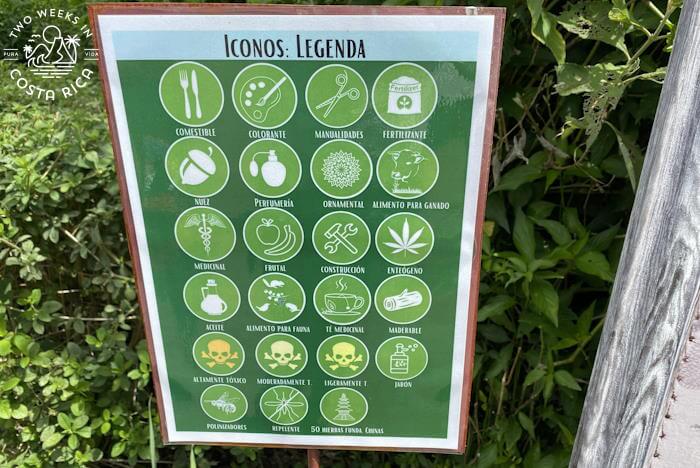
Medicinal Garden
Eric pointed to different plants and told us a little bit about them.
Jackass bitters, we learned, is good for migraines, though has an unpleasant taste.
Dragon blood is used as an antiseptic. Eric said that he had recently used it to heal a large wound in just 10 days.
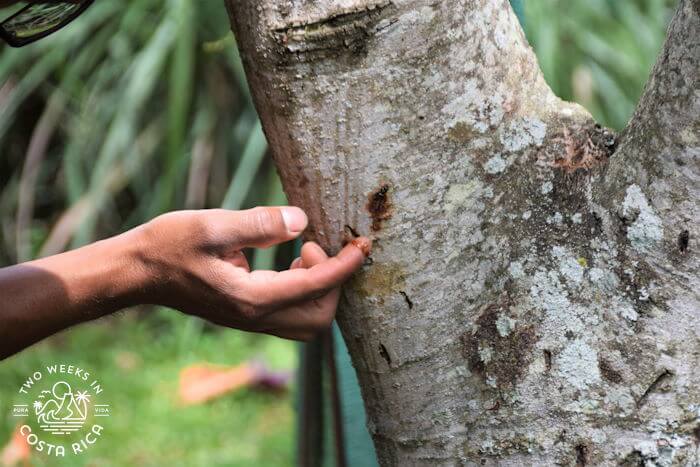
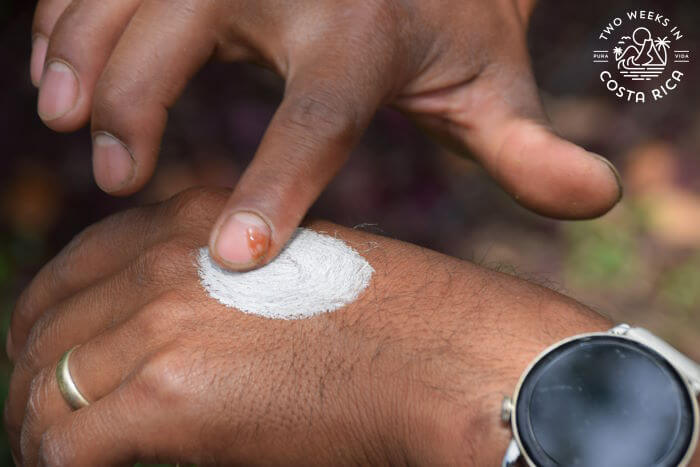
We also saw a large tea tree, several types of cinnamon, black pepper, and many varieties of aloe.
Culinary Garden
From the medicinal garden, we walked down the hill to the culinary garden. This had some interesting edible plants that we had never seen before.
Finger lime was a green fruit with tiny balls of sour gel inside that popped when you ate them, similar to caviar. We would get to enjoy this later in a cocktail at the restaurant.
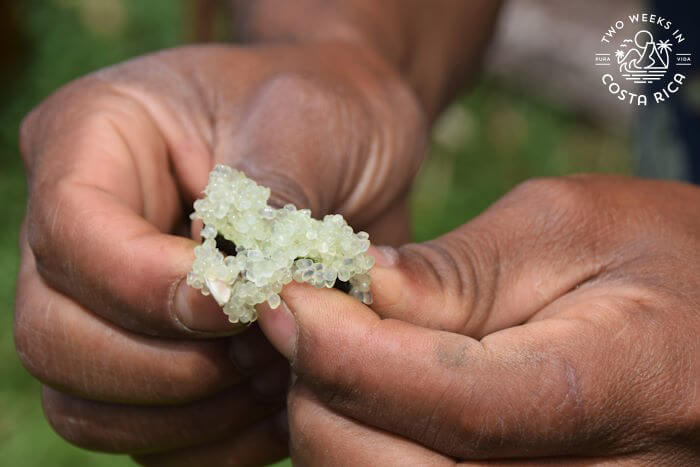
The cucamelon was a small round fruit that looked exactly like a baby watermelon on the outside but a cucumber on the inside.
They also had an assortment of edible flowers, like the purple butterfly pea, and many plants used for coloring food. Eric took one of them, a garden huckleberry, broke it open, and smeared the purple insides on his hand to show us. He was very knowledgeable about all the plants and encouraged us to smell and taste what was growing.
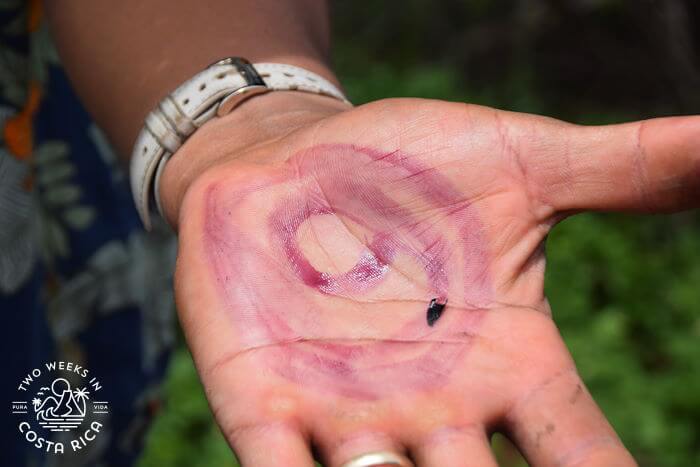
Other Areas
After trying some of the edible plants, we headed to the Sacred Garden. We wouldn’t be sampling any of these, which were known for their strong medicinal effects.
We saw the ayahuasca plant growing wildly. This vine is used by Amazonian shaman for a variety of medicinal, spiritual, and cultural purposes. We also saw Chinese ephedra, which people are using to make methamphetamines.
Past this garden was an open area with lots of large fruit trees. Here, we saw many types common in Costa Rica, like avocado and mangosteen, but also others we weren’t familiar with, like the cola tree from Africa.
El Arca Restaurant
After our tour, we got to taste some of the garden’s bounty for lunch.
The restaurant space at El Arca is formal and gorgeous. It has high ceilings and lovely colonial architecture. The dining room overlooks the Central Valley. Tables are set up on a covered terrace as well as inside the restaurant.
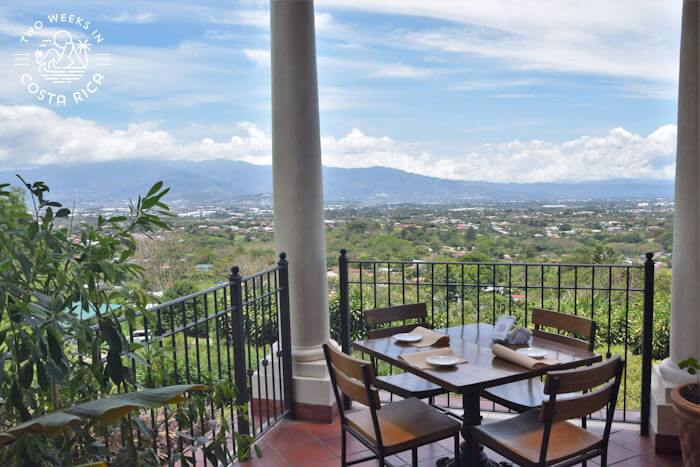
El Arca’s restaurant uses ingredients straight from their garden. The menu changes frequently based on what is available and fresh.
The Multi-Course Meal
On our visit, we had a six-course lunch. The first course was a variety of artisanal breads served with herbed olive oil.
The second course was a pejibaye dip, made from the fruit of the peach palm tree. Pejibaye is common in Costa Rica, but we had never had it like that before. It was decadent and lovely as a dip for our fresh veggies and pita crisps.
Our third course was an elegant zucchini carpaccio in a lemony Caribbean sauce. They made this with some of the lemon caviar from the garden.
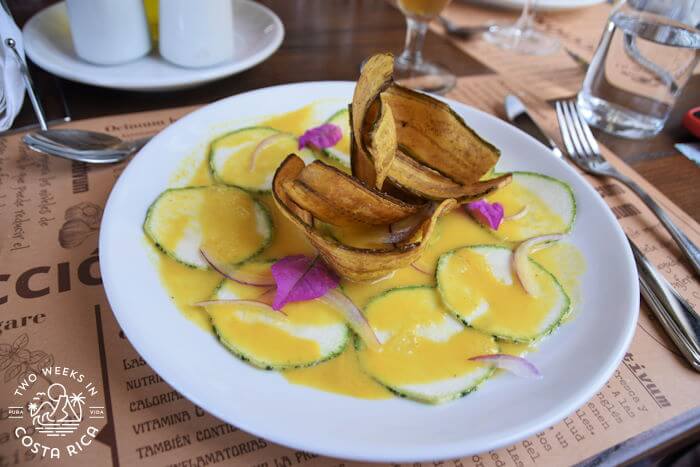
Next came a carrot and pineapple salad.
Then we had the main course: panko-covered local trout served with a turmeric tartar sauce.
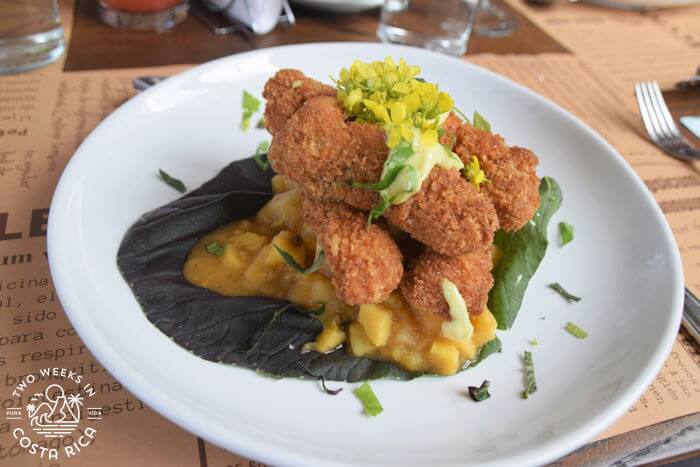
Finally, we ended with sapote pie with chocolate mousse and caramel sauce. Sapote is a native fruit that tastes similar to pumpkin when ripe. This dessert was a crowd pleaser. Even our four-year old ate every last bite!

Drinks
They also had some nice options for cocktails. Cocktails are not always the best in Costa Rica, but our gin herbs martini was perfectly balanced and refreshing.
We didn’t visit it, but there’s also a meadery on the property. The restaurant had several types of their wine, beer, mead, and spirits on the menu.
Kids Menu
They had options for kids too. Our kids had fish fingers with French fries, but there were other things to choose from.
Planning Your Visit to El Arca Botanical Garden
Guided Tours
Cost: Visitors – $45 per person. Nationals and Residents – $35 per person.
Duration: 2 hours
Guided tours need to be arranged in advance. You can contact El Arca Botanical Garden directly through their website for reservations.
Unguided Tours
Cost: Visitors – $10 per person. Nationals and Residents – $8 per person.
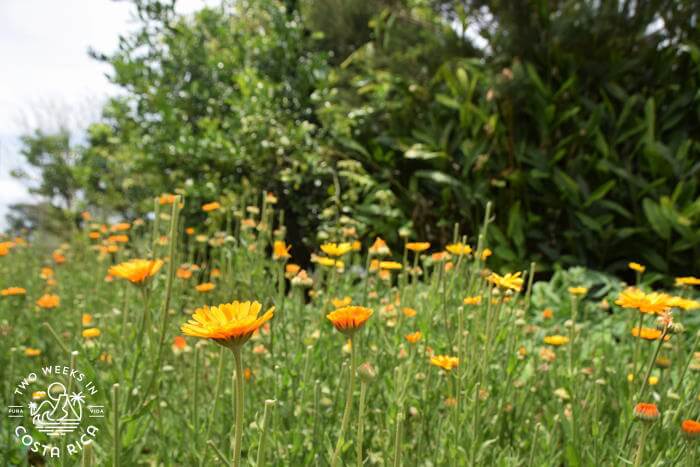
Map and Accessibility
El Arco’s gardens are not handicap accessible, but the terrain is mostly flat and well maintained. You do have to walk down a somewhat steep hill to reach some of the gardens. They have a resting area near the bottom of the hill.
To get back up the hill to the reception area at the end of the tour, they can take you in a golf cart.

Restaurant
Lunch: Open Tuesday to Sunday from 12:00 p.m. – 2.30 p.m. Closed Mondays.
Be sure to make a reservation in advance. You can contact El Arca Botanical Garden directly through their website for reservations.
Cost: Adults – 17,500 colones (around $32). Children – 7,500 colones (around $15).
You can find the current menu on their Facebook page.
Vivero/Nursery
For those living in Costa Rica looking to add some unique plants to their garden, El Arca also has a nursery with plants for purchase. They even have an inventory of what’s available on their website.
What to Bring
Comfortable walking shoes
Hat and sunscreen (most of the gardens are in full sun)
An umbrella and light raincoat (during rainy season – May through early December)
Conclusion
Finding El Arca Botanical Garden on a visit to the Heredia area was a welcome surprise for us. Not only is it the perfect stop for plant and garden enthusiasts, but it’s also an amazing foodie destination. Our lunch was one of the best we’ve had in our years living in Costa Rica. We will definitely be back again to see what’s coming fresh from their garden.
Have a question about visiting El Arca Botanical Garden or have you been? Let us know in the comments below.
Looking for more information to plan your trip to Costa Rica? Check out these posts:
Wilson Botanical Garden: On the far southern end of Costa Rica is another well-known botanical garden. Check out our post to learn more.
Villa Vanilla Spice Farm: A Rainforest of Flavors Near Manuel Antonio – Villa Vanilla is a biodynamic farm where you can see cinnamon, vanilla, pepper, and other spices growing. Their tour includes a delicious dessert tasting.
The Truth About Visiting Poas Volcano: Poas is the most popular volcano to visit near San Jose but is it worth the trip? Check out our post for more.
